robo advisor
description: an automated financial adviser that provides investment advice based on algorithms
17 results
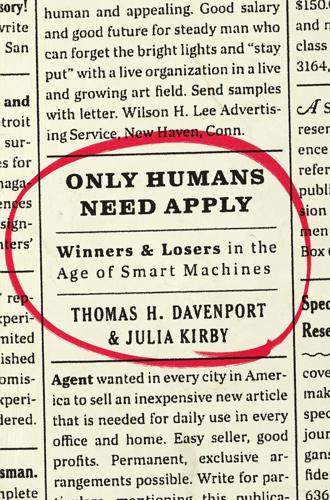
Only Humans Need Apply: Winners and Losers in the Age of Smart Machines
by
Thomas H. Davenport
and
Julia Kirby
Published 23 May 2016
Steps for Financial Planners and Brokers The decisions traditionally made by financial planners and brokers—specifying what financial assets a client should invest in—are increasingly being made better by computers. This trend even has a name—the “robo-advisor.” But the same steps available to underwriters and teachers can work for this group as well. Start again with stepping up, which in financial advising includes determining which types of investments automated systems should even consider in their allocations. As global financial environments (interest rates, economic growth, etc.) change, stepping up means saying how automated advice should change with them. At Betterment, for example, one of the larger and more successful startups in the robo-advisor space, there is a “Behavioral Finance and Investing” department made up of five experts focusing on how to improve their system’s investment advice, determining the right asset allocation, changing investment management strategies over time, and “behavioral design”—trying to nudge Betterment customers toward more rational economic behaviors with their investments.
…
Human advisors can “motivate the client to gather all of that information,” says Easterbrook, and correct for the fact that clients “are often overly optimistic about their finances and undisciplined about following up.” David Port, who has written on the rise of robo-advisors, also emphasizes the value of advisors who care about their clients’ goals. Port notes, “The heart of the value proposition for flesh-and-blood advisors is the ability to be a trusted resource to clients, not only in the various areas of planning, but as a source of objective information and advice, delivered with a personal touch.”15 Planners and brokers who step in take full advantage of robo-advisors as supersmart colleagues. Once their firm adopts a particular tool, they are quick to familiarize themselves with the logic it relies on to make its decisions and are not shy about telling the technologists in their firm and external vendors to modify and improve it.
…
Thomas Arnett, “How Technology Displaces Teachers’ Jobs,” Clayton Christensen Institute for Disruptive Innovation, November 19, 2014, http://www.christenseninstitute.org/how-technology-displaces-teachers-jobs/#sthash.PyjrVrNk.dpuf. 15. David Port, “Reckoning with Robo-Advisors,” LifeHealthPRO, December 31, 2014, http://www.lifehealthpro.com/2014/12/31/reckoning-with-robo-advisors. Chapter 4: Stepping Up 1. “Statement of Ronald J. Cathcart,” Hearing Before the United States Senate Permanent Subcommittee on Investigations of the Committee on Homeland Security and Governmental Affairs, April 13, 2010, https://www.hsgac.senate.gov/downloads/stmt-cathcart-ronald-april-13-2010-psi-fin-crisis-hrg. 2.
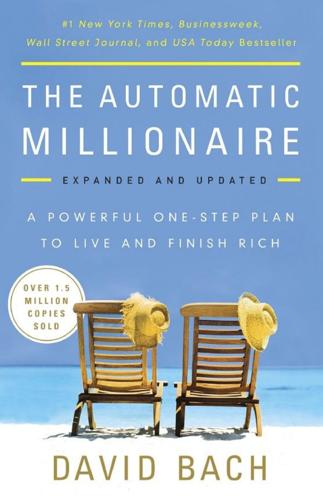
The Automatic Millionaire, Expanded and Updated: A Powerful One-Step Plan to Live and Finish Rich
by
David Bach
Published 27 Dec 2016
Vanguard is also quickly taking a lead in the “robo advisory” space with their Personal Advisory Service, which is a full-service advisory with automatic managed portfolios built for you, and automatic rebalancing. The only bummer is that the account minimum, as I write this, is $50,000 for these services. THE ROBO ADVISORS—NEW PLAYERS TO MAKE IT AUTOMATIC One of the biggest changes in investing since I wrote the original version of this book is the appearance of a new type of investment advisory service generally referred to as “robo advisors.” Using technology, these primarily online-only firms offer professionally managed portfolios made up of low-cost funds (usually ETFs and index funds). Here’s how it works: You go online and answer a series of questions on an automated form.
…
Your investment is instantly diversified and automatically rebalanced over time. Most important to me as your coach, these online options come with much smaller minimum account sizes and in some cases no minimums at all. Over the past few years, dozens of new robo advisors have come into the market, and today they manage a little over $100 billion worth of assets and are growing fast. In truth, many of these robo advisors are small start-ups that will not last very long, because the bigger firms have deeper pockets and more marketing dollars. So the good ones will be bought by the bigger financial service firms and integrated (which is already happening).
…
Below are six investor-friendly firms that I think make the process really easy online. The first four are all large, established companies that offer online services with phone support, and all can help you automate the process in minutes. The last two companies listed are new players in the online space, now referred to as “robo advisors.” (They are much, much smaller than the four big companies listed ahead of them, and could easily have been bought by one of them by the time you read this. Still, I felt it was important to include them and let you see what is available.) Although this is not an exhaustive list, it may be all you need to make a decision.
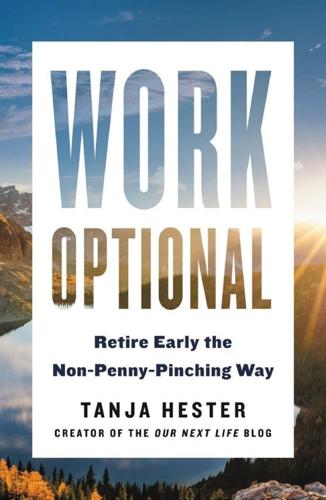
Work Optional: Retire Early the Non-Penny-Pinching Way
by
Tanja Hester
Published 12 Feb 2019
Many of these companies promise lower fees than standard mutual fund managers, but the fees are typically still substantially higher than with index funds in which you invest on your own. In addition to having higher fees than many index funds, robo advisors may not always make it obvious when they’re changing your investment strategy and charging you more, requiring you to opt out of changes rather than opt in to them. The whole point of using a robo advisor, after all, is to never have to think about your portfolio, so it makes sense that they would not want to bother you with details about changes, though those changes may not always be in your best interest. Another drawback to consider is that with a robo advisor, frequent rebalancing can result in many taxable events being triggered, which could interfere with your tax and health care planning.
…
If the stay-at-home partner has some earned income from a home-based business or side gig, he or she can also open an individual or solo 401(k), as discussed above, and contribute up to one-quarter of their earned income, up to a limit of $56,000 per year as of 2019. Robo Advisors An increasingly popular way to invest is with a so-called robo advisor, an investment brokerage that uses technological algorithms, rather than highly paid human analysts, to balance and rebalance your portfolio according to your goals (long-term growth, dividends, etc.) and timeline. The promise is that they can get you market-matching or market-beating returns without you having to do a thing other than set up your investment account.
…
Another drawback to consider is that with a robo advisor, frequent rebalancing can result in many taxable events being triggered, which could interfere with your tax and health care planning. While the appeal of robo advisors is obvious, setting up an index fund investment strategy is no more difficult and will save you fees. Health Savings Accounts (HSAs) Though it’s called a savings account, an HSA can be an excellent investment vehicle for early retirement and traditional retirement because it can function as both a savings account and an investment account in which you allocate funds to the investment vehicles of your choice based on what your account provider offers. The Affordable Care Act (ACA) includes a provision that allows employers to offer high-deductible health plans and allows individuals to buy similar plans on the health care exchanges that then allow the individual to open an HSA, a portable investment account that allows individuals to save for large health care expenses.
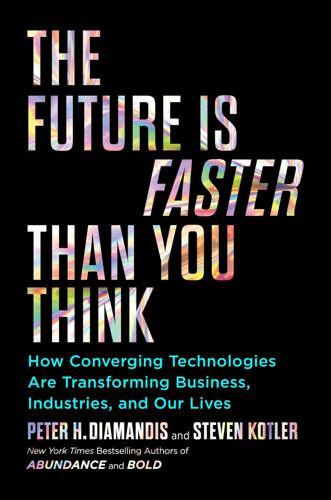
The Future Is Faster Than You Think: How Converging Technologies Are Transforming Business, Industries, and Our Lives
by
Peter H. Diamandis
and
Steven Kotler
Published 28 Jan 2020
Since it can take more time to manage small investors than large investors, many wealth managers have investment minimums in the range of hundreds of thousands of dollars. But AI has leveled the playing field. Today, robo-advisors like Wealthfront and Betterment are bringing wealth management to the masses. Via an app, clients answer a series of initial questions about risk tolerances, investment goals, and retirement aims, and then algorithms take over. Actually, algorithms have already taken over. Every day, roughly 60 percent of all market trades are made by computer. When the market turns volatile, this can climb to as high as 90 percent. All robo-advisors have done is make the process available to the customer, and save the customer money as a result.
…
All robo-advisors have done is make the process available to the customer, and save the customer money as a result. With no humans in the chain, fees are slashed. Instead of the typical 2 percent of profits charged by a wealth manager, most robo-advisors take around .25 percent. Investors are responding. As of January 2019, Wealthfront had $11 billion under management, while Betterment was at $14 billion. While robo-advisors still account for only roughly 1 percent of total U.S. investment, Business Insider Intelligence estimates that number will climb to $4.6 trillion by 2022. Finally we come to our last category, using money to pay for things. But we already know this story. When was the last time you dropped coins into a toll booth?
…
Betterment: See: https://www.betterment.com/. 60 percent of all market trades: Chris Isidore, “Machines Are Driving Wall Street’s Wild Ride, Not Humans,” CNN, February 6, 2018. See: https://money.cnn.com/2018/02/06/investing/wall-street-computers-program-trading/index.html. 90 percent: Ibid. robo-advisors take around .25 percent: See Wealthfront and Betterment’s websites for their rates. Wealthfront had $11 billion under management: Read the full SEC press release, titled “SEC Charges Two Robo-Advisers with False Disclosures,” here: https://www.sec.gov/news/press-release/2018-300. Betterment was at $14 billion: Garrett Keyes, “How Betterment Stayed on Top in 2018 (and How They Plan to Stay There in 2019),” Financial Advisor IQ, January 2, 2019.

Financial Freedom: A Proven Path to All the Money You Will Ever Need
by
Grant Sabatier
Published 5 Feb 2019
Check out XY Planning, a network of financial advisors who charge by the hour that includes some early retirement experts. Another option is to work with a low-fee company commonly known as a robo-advisor that uses algorithms to invest your money and keep you accountable. I’ve personally tested a number of robo-advisors, and you can easily save your money and do everything they do on your own. But if you decide you absolutely need help managing your investments, working with a robo-advisor like Vanguard Personal Advisor Services, Betterment, or Wealthfront are good options. Just be mindful of the fees and the type of support you get. I personally like Vanguard’s service because it has a low fee and you are also able to talk to a financial or tax advisor at any time if you have questions.
…
While you can hire a financial advisor or company to manage your investments, as you’ve learned throughout the book, the more you control your own financial life, the more money you can make. You can and should implement this strategy yourself, and realistically you can manage it in less than an hour a month. Financial Advisors, Fiduciaries, and Robo-Advisors If you need help investing, you can hire a fee-only financial advisor for a few hours to help you set up your accounts. You should work only with advisors who charge on an hourly or project basis, not based on AUM (assets under management). When you are charged based on AUM, your advisor is getting a percentage (typically 1 to 3 percent) of your investments to work with you, whether they make money for you or not, and the impact of those percentage withdrawals, like any other investment fee, will negatively compound over time, thus reducing the total long-term value of your investment.
…
., 148, 159, 271–72, 282 loss aversion, 88 Millennial Money, 11, 107, 146, 156, 164, 166, 168–69, 182 model portfolios, 229 Money Talk Cards, 305, 308 mopeds, 20, 109, 148, 182 mortgages, 52, 58, 66, 81–84, 131, 151 adjustable rate (ARMs), 268–70 fifteen–year, 269–70, 274 fixed rate (FRMs), 268–69, 274 investing and, 263–64, 266–77, 281, 283, 285–86 net worth and, 77, 81–82 preapproved, 281, 286 savings and, 146, 154 thirty-year, 269–70 mutual funds, 226, 229, 241, 243, 258 net worth, 13, 76–83, 122, 300, 312 calculation of, 76–77, 91 definition of, 82–83, 91 future-optimization framework and, 305–6, 308 investing and, 76–79, 82–83, 91, 108, 146, 223, 256, 268, 273, 276 negative, 82, 130–31 real estate and, 77–79, 83, 146 of Sabatier, 9–10, 82, 108, 114 savings and, 76, 79, 82, 146 side hustles and, 77, 108 and thinking about money before buying, 130–31, 137 your number and, 82–83, 91 New York City, 15, 150, 152, 166 housing and real estate in, 63–67, 271, 282, 315 1 percent rule, 281–82 passions, 2–3, 9, 33–35, 127 analysis of, 191–94, 209 in retirement, 297, 299 side hustles and, 11, 188, 191–96, 209 present value formula, 55–56 private mortgage insurance (PMI), 273–74 real estate: affordability of, 267, 270–75 and being prepared to walk away from deals, 285–86 buying and holding, 275, 286 case for, 264–66 criteria to follow for, 280–81, 285–86 finding properties and, 280–86 flipping of, 275–76, 286 with high rent appreciation potential, 281–82, 286 investing and, 2, 43, 119, 131, 146–47, 212–13, 237, 256, 260, 262–86, 289, 300, 302 net worth and, 77–79, 83, 146 refinancing of, 268, 270, 273 scaling in, 278–80, 286 test driving neighborhoods and, 284, 286 and thinking about money before buying, 127, 130–31, 133 see also homes, housing real estate agents, 182, 194, 283 real estate investment trusts (REITs), 237, 262 Realtors, 194, 279, 281–83, 286 recruiters, recruiting, 163, 165–66, 170, 173, 177, 192 retiring, retirement, 1, 8–12, 18–31, 34–36, 38–56, 308, 310 housing and, 45, 49, 52, 54, 60, 144 how much money actually needed for, 44–49 inflation and, 24–28, 40–42, 45–46, 94 investing and, 8–9, 21–28, 39–44, 46–51, 54–56, 60–61, 74–75, 179, 212, 215–22, 226, 229, 239, 242, 244–48, 251, 275, 287–92, 294–99 with less money at thirty than at sixty, 38–39, 47, 54 lifestyle and, 60–61, 74 living richer life and, 313, 315–16 and money for rest of your life, 42–44 and paying down debt, 84, 86 rewriting of, 28–31 of Sabatier, 8, 35, 45, 275 savings and, 8–9, 11, 20–22, 24–30, 38–40, 44–49, 51, 54–56, 60–61, 74, 94–96, 141, 144, 251 side hustles and, 43–44, 61, 69–70, 74, 179, 188, 192 time and, 19, 27, 45–47, 49n, 297–99 Trinity study and, 39–44 your number and, 36, 49–56, 68–70, 72–74 ride-sharing, 52, 109, 148 side hustles and, 183, 187, 190 risks, risk, 10, 16, 40, 49, 309 daily habits and, 89, 91–92 emotions and, 87–88 investing and, 14, 87, 106, 113–14, 211, 213, 215, 217–23, 229–30, 235, 237–38, 255–56, 260–61, 263–64, 269, 271, 279, 285, 289–91, 301, 317 side hustles and, 108, 112–13, 194, 202, 204 Robin, Vicki, 1–3, 32 robo-advisors, 212 Roth 401(k) accounts, 241, 243–45, 294, 298 Roth IRA accounts: conversion ladder for, 295, 298–99 investing in, 79, 95, 214, 218, 228, 241, 243–44, 247–49, 251, 258, 294–96, 298–99, 302 Rule of 72, 59, 75 Run the Trap, 191 S&P 500, 228, 232–38, 261 San Francisco, Calif., 64, 271, 282 savings, saving, 3, 5–11, 140–54 building wealth and, 93–94, 118 compounding and, 55, 59, 72, 94, 96, 143 daily habits and, 88–90 emotions and, 87–88 enterprise mindset and, 103, 107, 113–17 expenses and, 42–43, 74, 96–101, 120–21, 126–28, 130, 132–33, 137–38,140–44, 153–54 financial freedom levels and, 16–17 food and, 142–43, 152–54 future-optimization framework and, 301, 303, 305–6 housing and, 63, 67, 141–47, 154 inflation and, 8–9, 24–28 investing and, 95, 114–19, 143–44, 153–54, 213–17, 225, 239, 254, 258, 267–68, 273, 285, 287 job hacking and, 107, 159–60, 163, 170, 177 lifestyle and, 57–58, 60–61 living richer life and, 312–17 net worth and, 76, 79, 82, 146 rates of, 11, 13, 20–21, 24, 26–28, 33, 89, 94–101, 108, 114–19, 141,143, 213, 216–18, 256–58, 260, 300, 302–3, 305–6, 312–15, 317 retiring and, 8–9, 11, 20–22, 24–30, 38–40, 44–49, 51, 54–56, 60–61, 74, 94–96, 141, 144, 251 of Sabatier, 5–7, 9–11, 30, 45, 63, 95, 138, 143–44, 148, 151–53, 216–17, 256–57, 300, 302, 311–12 side hustles and, 113, 179 time and, 32–33, 94, 96–101, 118 transportation and, 141–43, 147–52, 154 your number and, 36–37, 39, 51, 54–56, 59, 68, 70–75, 94–95, 97–101, 118, 137, 141 see also health savings accounts saying no, 127, 208, 303–5, 310, 312 Charles Schwab, 232–33, 252 search engine optimization (SEO) projects, 175, 182 sequence-of-returns risk, 290–91 short sales, 283, 286 side hustles, 11, 14, 90, 153, 179–209, 300, 317 benefits of, 109–10, 185, 189 competitive analysis for, 200–203, 205, 209 enterprise mindset and, 104, 108–13, 119, 180 evaluation framework for, 190–209 in evenings, 186 figuring out what to charge for, 201–4, 209 future-optimization framework and, 301–3, 306 getting your first sale and, 204–6 hiring others for, 109, 111–13, 119, 206–7 in in-between moments, 187–89 incomes and, see under incomes investing and, 69–70, 95, 108, 113, 179–83, 187–88, 190, 192, 208, 216, 218, 220, 249–50, 259, 262, 264, 289–91, 298 job hacking and, 156, 160, 175 and knowing when to scale, 206–9 LLCs and, 179, 189–90 in mornings, 185 net worth and, 77, 108 retiring and, 43–44, 61, 69–70, 74, 179, 188, 192 of Sabatier, 9, 20, 58, 95, 104, 108–9, 175–76, 181–83, 185–86, 188, 194–95, 202–3, 205, 207–8 skills and, 109, 119, 175, 190–97, 201–2, 209 supply and demand for, 179, 182, 189, 194, 197–204, 206, 209 taxes and, 189–90, 249 time and, 108, 111, 180–87, 190, 199–200, 202–3, 207–9, 303 transportation and, 148, 187, 189, 192–93, 196, 208 on weekends, 186 and working for someone else vs. for yourself, 183–84, 207–9 your number and, 69–70, 179–81, 189, 209 your story in, 204–5 simplified employee pension individual retirement accounts (SEP IRAs), 79, 218, 228, 241, 243, 249–51 skills, 10, 51, 104, 133 analysis of, 191–94, 209 job hacking and, 14, 105, 156, 159, 164–66, 169, 174–78 learning new ones, 195–96, 209 retiring and, 34, 44 side hustles and, 109, 119, 175, 190–97, 201–2, 209 Social Security, 8, 26, 45n, 249, 269 expenses and, 53, 128, 141–42 Solo 401(k) accounts, 241, 243, 249–50 stocks, stock market, 160 buying individual, 254–57 compounding and, 22, 72 dividends paid by, 22, 25, 46, 111 emotions and, 86–87 international, 216, 229–30, 235–36 investing in, 2, 9, 17, 24–26, 34, 39–42, 46–47, 84, 86–87, 104, 114, 119, 162, 211–26, 228–38, 241–42, 244, 252–58, 260–62, 264–65, 273–79, 285, 287, 289–91, 297 past performance of, 222–23 and paying down debt, 84–86 retiring and, 39–44, 46–49 selection of, 228–29, 230–31, 255, 261 your number and, 36, 72 target date funds, 228–29, 238 taxes, 59, 64, 77, 83–84, 88, 102, 143 deductions and, 84, 128, 189–90, 240–42, 245–52, 254, 266–68, 276, 294,296–98 enterprise mindset and, 103, 114, 118 future-optimization framework and, 307–9 inflation and, 25, 45 investing and, 46, 114, 211–15, 218, 224, 228, 232, 235, 237, 239–55, 260, 262–68, 270–72, 275–77, 281–82, 285, 288, 291–99, 300, 315 job hacking and, 157–58 real hourly income rates and, 122–25, 129 retiring and, 19, 27, 45–47, 49n, 297–99 of Sabatier, 7–8 savings rates and, 95–96, 118 side hustles and, 189–90, 249 and thinking about money before buying, 120, 127–30 your number and, 52–53, 68–69 1031 exchanges, 264–65, 275 three fund investments, 235–36 time, 2, 10, 63, 153 compounding and, 22, 33, 305 daily habits and, 90–91 enterprise mindset and, 103, 105–6, 108, 111, 118–19, 300 expenses and, 32, 75, 129–30, 133–39 future-optimization framework and, 301, 303–5, 307–10 investing and, 33–34, 118, 133, 210, 212, 214–15, 224, 239, 283, 308 job hacking and, 105–6, 155–56, 160–64, 166–68, 170–73, 177–78 living richer life and, 312, 314–17 real hourly income rates and, 121–25, 129, 134–35, 139, 307 relationship between money and, 19, 32–35, 106, 111, 113, 121, 129, 133, 184, 188, 207–10, 303–4, 307–8, 310 retirement and, 19, 27, 45–47, 49n, 297–99 savings and, 32–33, 94, 96–101, 118 side hustles and, 108, 111, 180–87, 190, 199–200, 202–3, 207–9, 303 transportation and, 32–33, 148 Top Five Regrets of the Dying, The (Ware), 29–30 total stock market funds, see index funds trading, 132–33, 139 transportation, 32–35, 64, 91, 213, 297, 299, 313 expenses and, 25, 52, 54, 58–59, 61–62, 65–66, 75, 127, 140–43, 147–52, 154 housing and, 65–66, 145 job hacking and, 156–60 lifestyle and, 58–59, 61–62 real hourly income rates and, 122–25, 139 of Sabatier, 148, 151–52 savings and, 141–43, 147–52, 154 side hustles and, 148, 187, 189, 192–93, 196, 208 time and, 32–33, 148 travel-hacking and, 148–52, 154 your number and, 52, 54, 59 Trinity study, 39–44 vacations, 6, 9, 17, 28, 34, 52, 91, 105, 156, 187, 192, 278 expenses and, 130–31, 147 valuables, 52, 77–79, 83 value investing, 255 Vanguard, 212, 215, 234, 252 500 Index Fund Admiral Shares (VFIAX), 232–33 500 Index Fund Investor Shares (VFINX), 228, 232–33 Total Stock Market ETF (VTI), 222, 226, 232 Total Stock Market Index Fund (VTSAX), 228, 232–33, 257 Volkswagen (VW) campers, 8, 109, 182 Wang, Jim, 192 Ware, Bronnie, 29–30 wealth, 2–3, 16, 28, 38, 230 building of, 6, 11–12, 76, 86, 88, 93–94, 103, 118 daily habits and, 88–90 emotions and, 86, 88 job hacking and, 155, 162 net worth and, 76, 82 website building, 20, 58, 104, 175, 194–95, 201–3, 205, 207 for law firms, 181–82, 194, 202 We Need Diverse Books, 314–15 Your Money or Your Life (Robin and Dominguez), 2–3, 32 your number, 77, 307 breaking it down into smaller goals, 70–76 calculation and recalculation of, 13, 15, 44, 49–57, 66–69, 72, 75–76,82–83, 288–89, 300 definition of, 13, 82, 91 expenses and, 13, 36–38, 50–57, 59–60, 62–66, 68–70, 75, 135, 137, 276 housing and, 52, 54, 66–67 incomes and, 36–39, 68–70, 74, 82–83, 91, 169, 180, 189 investing and, 37, 47, 49–51, 54–56, 66, 68–70, 72–74, 82–83, 91, 137, 179, 181, 210, 213, 216, 221, 259–60, 275–76, 287–89 job hacking and, 155, 169, 174 lifestyle and, 15, 37, 59–60, 62 living richer life and, 312, 316 net worth and, 82–83, 91 of Sabatier, 12–13, 36 savings and, 36–37, 39, 51, 54–56, 59, 68, 70–75, 94–95, 97–101, 118, 137, 141 side hustles and, 69–70, 179–81, 189, 208 ABCDEFGHIJKLMNOPQRSTUVWXYZ ABOUT THE AUTHOR Grant Sabatier, called "The Millennial Millionaire" by CNBC, is the Founder of MillennialMoney.com, which has reached over 10 million readers.
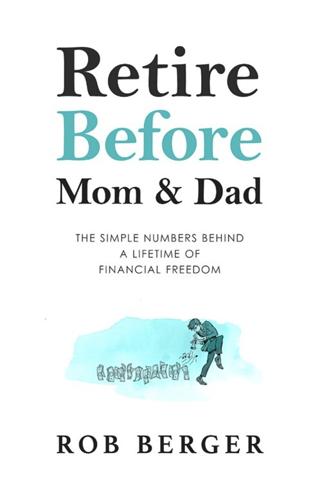
Retire Before Mom and Dad
by
Rob Berger
Published 10 Aug 2019
Its minimum deposit for an IRA is $1,000. Betterment is a type of investment company commonly called a robo-advisor. Betterment offers tools that make it incredibly easy to create a diversified stock and bond portfolio. It’s similar in concept to a Target Date Retirement fund, but it gives you more flexibility when it comes to your stock/bond allocation. It does come with a fee, so it’s not the least expensive option. I do think, however, that it is a reasonable choice. Resource: There are a number of robo-advisor options similar to Betterment. You can find an updated list of alternatives at https://www.retirebeforemomanddad.com/Resources.
…
—$96 a year. That’s it. He doesn’t manage your investments for you, but he will help you build a solid portfolio. He’ll also help you with everything from a budget to retirement projections to insurance to social security. You can get more information on PlanVision here: https://planvisionmn.com/. Robo-Advisors: As we discussed earlier, services such as Betterment offer low cost tools to help you build a solid portfolio. They use automation to help investors build low-cost, diversified portfolios using index ETFs (an ETF is similar to a mutual fund, but it trades like a stock). The typical fee is about 25 to 35 basis points.
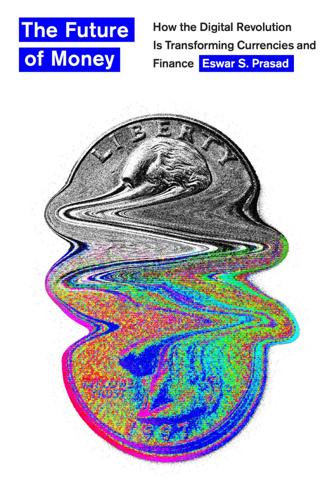
The Future of Money: How the Digital Revolution Is Transforming Currencies and Finance
by
Eswar S. Prasad
Published 27 Sep 2021
All that is required is a standardized set of information provided by the client that can be used to determine the investor’s tolerance for risk, investment horizon, expected income trajectory, household demographics, and tax considerations. To be sure, a robo-advisor does not provide the human interaction or the face-to-face reassurance that an investor might need. And for anyone who has dealt with an artificial intelligence–based automated customer support hotline, consulting with a robo-advisor might be an exercise in frustration once one tries to do anything that deviates from a routine transaction. But the consistency, reliability, and low cost of robo-advisors are likely to eventually win the day. Technological developments have fostered competition to traditional wealth managers in two ways: first, by bringing down costs and, second, by reducing entry barriers to new and nimbler competitors who can challenge the business models of incumbents.
…
The minimum investment requirements and fees for robo-advising accounts for Charles Schwab and Vanguard are taken from these websites: https://www.schwab.com/intelligent-portfolios and https://investor.vanguard.com/advice/digital-advisor. Assets under management at various robo-advisors as of mid-2020 are available at https://www.investopedia.com/robo-advisors-2020-managing-volatility-cash-and-expectations-5081471. The estimate for the total robo-advising market comes from Bailey McCann, “Robo Advisers Keep Adding on Services,” Wall Street Journal, March 8, 2020, https://www.wsj.com/articles/robo-advisers-keep-adding-on-arms-11583331556.
…
Managing Money and Wealth Managing households’ investment portfolios is big business, especially when it comes to wealthy households that have large amounts of money to invest. Most commercial and investment banks dedicate specific divisions to helping investors manage their financial portfolios, giving them advice and also undertaking investments on their behalf. This is a lucrative business as it can generate substantial fees. Robo-advisors now provide the sorts of investment banking advice that human advisors used to provide (and collect fees for). Surely the human touch matters and cannot be replaced by algorithms or mechanical rules that do not take into account each investor’s individual circumstances? In fact, for most retail clients, basic financial risk-management principles can easily be applied to construct individualized portfolios.
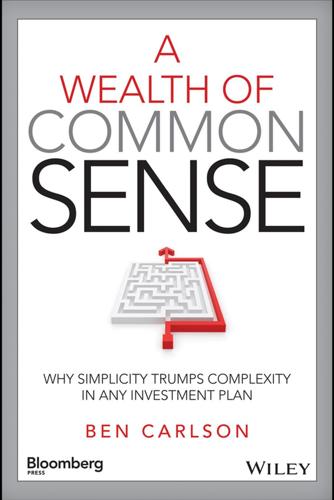
A Wealth of Common Sense: Why Simplicity Trumps Complexity in Any Investment Plan
by
Ben Carlson
Published 14 May 2015
Even if it feels uncomfortable, you should rarely, if ever, be surprised by their actions. Alternatives You probably need a healthy six-figure portfolio to find an advisor who will work with you. There are now advisors who focus on smaller client balances with lower minimums, but it's rare. For those who really want to automate their plan and not have to do a ton of work, the robo-advisors are a nice option. Companies like Wealthfront, Betterment, Liftoff, and Charles Schwab will charge very low fees and run a broadly diversified ETF portfolio that's fully automated. You fill out a risk tolerance questionnaire and they perform such services as tax-loss harvesting, rebalancing, and automatic contributions and dividend reinvestments on your behalf.
…
Market Munger, Charlie Murray, Nick mutual fund closures mutual fund flows NASA NASDAQ negative knowledge New York Stock Exchange newsletters Nifty Fifty large-cap growth stocks Nobel Prize Norton, Michael O'Shaughnessy, Jim Occam's razor Odean, Terrance Ono, Jiro overdiversification Paine, Thomas paradox of skill Pareto, Vilfredo patience pension plans perma-bears perma-bulls persistence Peter Lynch Pioneering Portfolio Management (Swensen) Playsted Wood, James Ponzi scheme Poor Charlie's Almanack (Munger) Poor Richard's Almanack precious metals preferred stocks quantitative investment strategies real estate rebalancing recessions regret minimization REITs Research Affiliates restaurant menus Richards, Carl risk aversion risk premium risk tolerance questionnaire robo-advisors Roth IRA Rule Number Russell 3000 S&P, 500 42 Saban, Nick San Francisco saving Schwed, Fred self-awareness self-regulation sell-side research Siegel, Jeremy signaling Significant Objects Project smallcaps smartbeta Soros, George South Sea Bubble standard deviation Statman, Meir Stewart, Porter Stock Picking Stocks for the Long Run (Siegel) stress sushi Swensen, David symptoms of groupthink Tannen, Biff taxes Taylor, John Templeton, John ten-year Treasury bonds Thaler, Richard trading activity Treasury bills Truman, Harry tulip bubble uncertainty unemployment rate and stock market returns value investing value-add from financial advice Vanguard volatility Vonnegut, Kurt Walker, Rob Walmart wealthfront What Works on Wall Street (O'Shaughnessy) will power Yale University Endowment Fund yield Zweig, Jason WILEY END USER LICENSE AGREEMENT Go to www.wiley.com/go/eula to access Wiley’s ebook EULA.
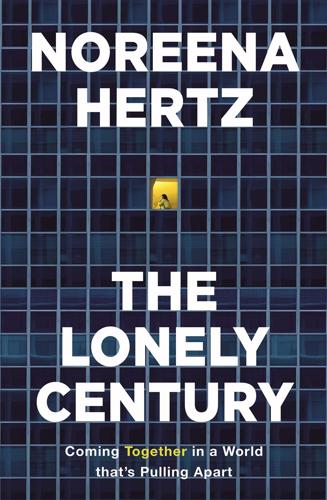
The Lonely Century: How Isolation Imperils Our Future
by
Noreena Hertz
Published 13 May 2020
Douglas Miller and Eric W. Brown, ‘Artificial Intelligence in Medical Practice: The Question to the Answer?’, American Journal of Medicine 131, no. 2 (2018), 129–33, https://doi.org/10.1016/j.amjmed.2017.10.035. 97 ‘The Rise of the Robo-advisor: How Fintech Is Disrupting Retirement’, Knowledge@Wharton, 14 June 2018, https://knowledge.wharton.upenn.edu/article/rise-robo-advisor-fintech-disrupting-retirement/; Charlie Wood, ‘Robot analysts are better than humans at picking stocks, a new study found’, Business Insider, 11 February 2020, https://www.businessinsider.com/robot-analysts-better-than-humans-at-picking-good-investments-study-2020-2?
…
‘It’s true – you can unlock cash from the equity in your home’, countered the AI. The second advert generated almost twice as much click-through.95 AI is already outperforming trained physicians when it comes to diagnosing cancer, and analysing MRIs and other scans in radiology, dermatology and pathology.96 Elsewhere, robo-advisors already offer asset management and investment strategies for a fraction of the cost commanded by their well-heeled ‘active management’ human competitors and often with greater success.97 Even the most godly of professions may not be immune. In 2017, a refurbished ATM christened BlessU-2 was introduced in Wittenberg, Germany, to celebrate the five-hundredth anniversary of the Protestant Reformation.
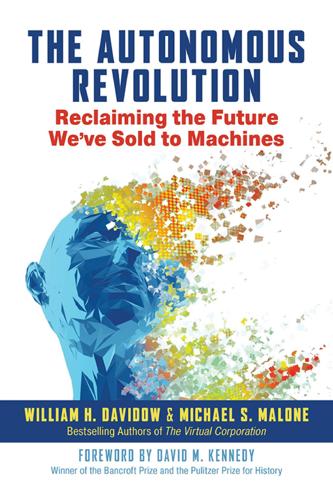
The Autonomous Revolution: Reclaiming the Future We’ve Sold to Machines
by
William Davidow
and
Michael Malone
Published 18 Feb 2020
Jim Pavia, “CNBC Ranks the Top 50 Money-Management Firms of 2015,” CNBC, September 15, 2015, https://www.cnbc.com/2015/09/15/cnbc-ranks-the-top-50-money-management-firms-of-2015.html (accessed June 27, 2019). 27. Hal M. Bundrick, “Top 10 Robo Advisors Ranked: Find the Best Automated Online Investing Services,” The Street, February 27, 2015, https://www.thestreet.com/story/13060011/2/top-10-robo-advisors-ranked-find-the-best-automated-online-investing-services.html (accessed June 27, 2019). 28. Charles D. Ellis, “The End of Active Investing?,” Financial Times, January 19, 2017, https://www.ft.com/content/6b2d5490-d9bb-11e6-944b-e7eb37a6aa8e (accessed June 27, 2019). 29.

Heads I Win, Tails I Win
by
Spencer Jakab
Published 21 Jun 2016
One of the portfolios listed under aggressive growth looks like this: U.S. small-capitalization stocks 20% U.S. large-capitalization stocks 10% Real estate investment trusts 11% International stocks 13% Fixed income (bonds) 30% Emerging-market stocks 16% The standard deviation of this portfolio over the last five years (as of March 2015) was higher than stocks alone, though not by too much. But one dollar invested in the portfolio in 2000 would have grown to $3.17, compared to $2.01 in the S&P 500 Total Return Index. That’s a big payoff for a small increase in risk. And then there are full-fledged “robo-advisors”—companies with names like Betterment and Wealthfront—where you deposit your savings and open an account. Wealthfront boasts a marquee name among its staff, with Princeton University professor Burton Malkiel acting as chief investment officer. Betterment’s advisors are also impressive. Both will, like SigFig, apply modern portfolio theory, tax-loss harvesting, and other techniques to your portfolio.
…
You probably don’t have a close relative with financial expertise who can and will ask to see your portfolio, and even if you do, he or she may not be able to look at it in an emotionally detached way or prevail upon you to stop doing something stupid. But there are people and companies out there who get paid to do that: financial advisors. My advice to you is to pay for only the services you need and no more but also no less. Several chapters ago I went through the services that a so-called robo-advisor can provide. Aside from constructing a portfolio for you as good as anything a human can concoct, many are keenly aware of the emotional side of investing. From the way they present results to the frequency with which they contact you, they try to avoid causing you to do something counterproductive.

How to DeFi
by
Coingecko
,
Darren Lau
,
Sze Jin Teh
,
Kristian Kho
,
Erina Azmi
,
Tm Lee
and
Bobby Ong
Published 22 Mar 2020
Appendix CoinGecko's Recommended DeFi Resources Information DeFi Prime - https://defiprime.com/ DeFi Pulse - https://defipulse.com/ DeFi Tutorials - https://defitutorials.com/ LoanScan - http://loanscan.io/ Newsletters Bankless - https://bankless.substack.com/ DeFi Tutorials - https://defitutorials.substack.com/ DeFi Weekly - https://defiweekly.substack.com/ Dose of DeFi - https://doseofdefi.substack.com/ Ethhub - https://ethhub.substack.com/ My Two Gwei - https://mytwogwei.substack.com/ The Defiant - https://thedefiant.substack.com/ Week in Ethereum News - https://www.weekinethereumnews.com/ Podcast BlockCrunch - https://castbox.fm/channel/Blockcrunch%3A-Crypto-Deep-Dives-id1182347 Chain Reaction - https://fiftyonepercent.podbean.com/ Into the Ether - Ethhub - https://podcast.ethhub.io/ PoV Crypto - https://povcryptopod.libsyn.com/ Wyre Podcast - https://blog.sendwyre.com/wyretalks/home Youtube Chris Blec - https://www.youtube.com/c/chrisblec Bankless Level-Up Guide https://bankless.substack.com/p/bankless-level-up-guide Projects We Like Too Dashboard Interfaces DeFi Prime Portfolio - http://portfolio.defiprime.com Frontier - https://frontierwallet.com/ InstaDApp - https://instadapp.io/ MyDeFi - https://mydefi.org/apps Zerion - https://zerion.io/ Decentralized Exchanges Bancor - https://www.bancor.network/ Curve Finance - https://www.curve.fi/ Dex Blue https://dex.blue/ Kyber - https://kyberswap.com/swap Exchange Aggregators 1inch - https://1inch.exchange/ Dex.ag - https://dex.ag/ Paraswap - https://paraswap.io/ Lending and Borrowing Dharma - https://www.dharma.io/ Prediction Markets Augur - https://www.augur.net/ Taxes TokenTax - https://tokentax.co/ Wallet GnosisSafe - https://safe.gnosis.io/ Monolith - https://monolith.xyz/ Yield Optimisers Iearn - https://iearn.finance/ RAY - https://staked.us/v/robo-advisor-yield/ References Chapter 1: Traditional Financial Institutions Bagnall, E. (2019, June 30). Top 1000 World Banks 2019 – The Banker International Press Release – for immediate release. Retrieved February 20, 2020, from https://www.thebanker.com/Top-1000-World-Banks/Top-1000-World-Banks-2019-The-Banker-International-Press-Release-for-immediate-release Boehlke, J. (2019, September 18).

The Great Reversal: How America Gave Up on Free Markets
by
Thomas Philippon
Published 29 Oct 2019
Innovations can provide new gateways for entrepreneurship and democratize access to financial services, but they also create significant privacy, regulatory, and law-enforcement challenges. Examples of innovations that are central to fintech today include mobile payment systems, crowdfunding, robo-advisors, blockchains, and various applications of artificial intelligence and machine learning. All the large financial firms have jumped on the tech wagon. JPMorgan Chase & Co. recently announced that it will require its asset management analysts to learn to use Python, a powerful and flexible coding language.
…
In other words, it is possible to implement a blockchain in which private data can be erased under some conditions. But it must be conceived as such from the beginning. It would be much more difficult to let it grow and then, ten years later, ask for new features to protect privacy. Fintech is also likely to create new issues of consumer protection. Think of the example of robo-advisors for portfolio management. Robo-advising will certainly create new legal and operational issues, and it is likely to be a headache for consumer protection agencies, as discussed in Baker and Dellaert (2018). Yet if the goal is to protect consumers, robo-advising does not need to be perfect: it only needs to be better than the current system.

The Blockchain Alternative: Rethinking Macroeconomic Policy and Economic Theory
by
Kariappa Bheemaiah
Published 26 Feb 2017
As the transactions occur in real time over the loan cycle, regulators are provided with a real-time view of the financial details, which simplifies the KYC/AML procedures . As it stands, MoneyCircles is regulated by the UK Prudential Regulation and Financial Conduct Authorities. While machine learning and robo-advisors are changing the investment landscape, compliance, auditing, and regulatory costs continue to surge (Noonan, 2015). It is in this sector that banks, taxation bodies, and regulators stand most to gain by the adoption of Blockchain, as the technology has the potential to provide them with a heightened enforcement tool.
…
relative industry shares risk innovation CDOs, CLOs and CDSs non-financial firms originate, repackage and sell model originate-to-distribute model originate-to-hold model principal component production and exchange sharding Blockchain FinTech transformation global Fintech financing activity private sector skeleton keys AI-led high frequency trading amalgamation Blockchain fragmentation process information asymmetries Kabbage KYC/AML procedures KYC process machine learning P2P lending sector payments and remittances sector physical barriers rehypothecation robo-advisors SWIFT and ACH transferwise solution pathways digital identity and KYC private and public utilization scalability TBTF See(Too Big to Fail (TBTF)) television advertisement Financialization SeeFragmentation Financial Stability Oversight Committee (FSOC) Financial system Financial Technology (FinTech) capital markets Carney, Mark CHIPS financial services financing activities histroy insurance sector investment/wealth management lending platforms payments Foreign direct investment (FDI) Fractional Reserve banking base and broad money capital requirements central banks commercial banks exchanging currency fractional banking governments monetary policies monetary policy objectives Tier 1, Tier 2, and Tier 3 capital value of a currency Fragmentation concept of current economic malaise dial-up Internet access evolutionary biology Haldane, Andy information asymmetry limitations problem-solving approaches regulatory-centric approach systemic risk TBTF US telecoms industry G Genetic algorithm (GA) Gramm-Leach-Bliley Financial Modernization Act Greenspan, Alan Gresham’s law Guardtime H Haldane, Andy Heterogenous interacting agents High-frequency trading (HFT) Human uncertainty principle HYPR I Implicit contracts Information and communication technologies (ICTs) Institute for New Economical Thinking (INET) Insurance sector InterLedger Protocol (ILP) Internal Revenue Service (IRS) iSignthis J Junk bonds K Kashkari, Neel Kelton, Stephanie Kim-Markowitz Portfolio Insurers Model Know Your Business (KYB) Know Your Customer (KYC) advantage Atlantic model concept of contextual scenario development of documents empirical approach Government digital identity programs identity identity and KYC/AML services Kabbage KYC-Chain manifestations merchant processor multidimensional attributes multiple sources Namecoin blockchain OpenID protocol procedural system regulatory institutions tokenized identity transactional systems value exchange platforms vast-ranging subject Zooko’s triangle kompany.com L Large hadron collider (LHC) Living Will Review process M Macroeconomic models types cellular automata (CA) equilibrium business-cycle models genetic algorithm (GA) neural networks rational expectations structural models traditional structural models vector autoregression (VAR) models Macroeconomic theories Man-in-the-middle (MITM) Marketing money cashless system crime and taxation economy IRS money Seigniorage tax evasion Mathematical game theory McFadden Act Mincome, Canada Minority Game (MG) Money anddebt See alsoDebt and money capitalism cash obsession CRS report currencies floating exchange functions gold and silver history of money histroy real commodities transfer of types of withdrawn shadowbanking See(Shadow banking and systemic risk) utilitarian approach Multiple currencies Bitcoin Obituaries bitcoin price BTC/USD and USD/EUR volatility contractual money cryptocurrencies differences free banking Gresham’s law legal definition legal status private and government fiat private money quantitative model sovereign cash volatility N Namecoin blockchain Namibia Natural Language Processing (NLP) NemID Neo-Keynesian models Neuroplasticity New Keynesian models (NK models) O Occupational Information Network (ONET) Office of Scientific Research and Development (OSRD) OpenID protocol Originate, repackage and sell model Originate-to-distribute model P Paine, Thomas Palley, Thomas I.

The War on Normal People: The Truth About America's Disappearing Jobs and Why Universal Basic Income Is Our Future
by
Andrew Yang
Published 2 Apr 2018
Said the Financial Times, “Younger clients don’t want, and can’t afford, an annual meeting with an advisor talking about the relative pros and cons of emerging markets, bonds or structured products. They want simple guidance and 24-hour access… they don’t want advice delivered in an office, they want an app.” By 2020, global assets under management of robo-advisors is projected to skyrocket to $8.1 trillion by 2020, and 72 percent of investors under 40 said they would be comfortable working with a virtual advisor. Fifty-five hundred floor traders once roamed the trading floor of the New York Stock Exchange. Now there are fewer than 400, as most trading jobs have been taken over by servers running trading algorithms.

Beyond Diversification: What Every Investor Needs to Know About Asset Allocation
by
Sebastien Page
Published 4 Nov 2020
For example, individuals with higher levels of specific enzymes may have higher risk tolerance. However, our clients have found the idea of a blood test a bit too invasive. Less invasive approaches include survey methods. We ask investors questions such as “What’s the most you could tolerate to lose in one year?” Robo-advisors rely on such questions to select portfolios for individuals without human intervention. This approach obviously requires the ability to estimate exposure to loss correctly, with consideration for fat tails. Otherwise, when we select the portfolio for the investor, we create a dangerous misalignment between exposure to loss and the investor’s risk tolerance.

The Inevitable: Understanding the 12 Technological Forces That Will Shape Our Future
by
Kevin Kelly
Published 6 Jun 2016
expanding 70 percent a year: Private analysis by Quid, Inc., 2014. taught an AI to learn to play: Volodymyr Mnih, Koray Kavukcuoglu, David Silver, et al., “Human-Level Control Through Deep Reinforcement Learning,” Nature 518, no. 7540 (2015): 529–33. Betterment or Wealthfront: Rob Berger, “7 Robo Advisors That Make Investing Effortless,” Forbes, February 5, 2015. 80 percent of its revenue: Rick Summer, “By Providing Products That Consumers Use Across the Internet, Google Can Dominate the Ad Market,” Morningstar, July 17, 2015. 3 billion queries that Google conducts: Danny Sullivan, “Google Still Doing at Least 1 Trillion Searches Per Year,” Search Engine Land, January 16, 2015.